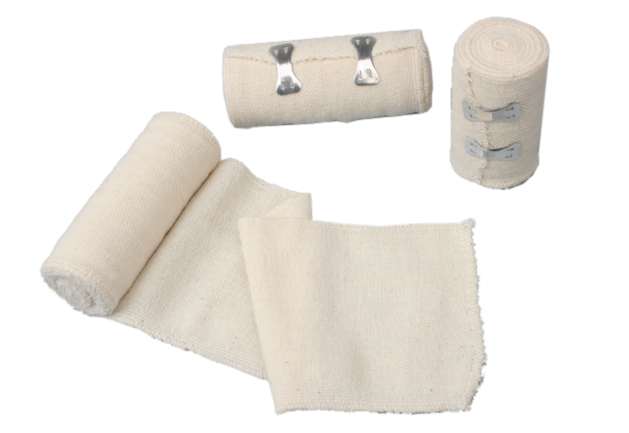Spandex Elastic Bandages, Supports injured body parts and provides compression where needed. Spandex provides more stretch and recovery;aiding the bandages to provide compression more efficiently
If you’re not familiar with first aid supplies, you may be wondering: what is a crepe bandage, Spandex Elastic Bandages and how is it different from a cohesive bandage? What about conforming bandages? Here we will look at what kinds of bandage are available and which situations they are ideal for.
Crepe bandages
Crepe bandages,
commonly made of cotton, are a woven, elasticated bandage. Crepe bandages are ideal to support the healing of sprains and strains, as they provide good compression to injured areas, as per the PRICE method, but as they’re elastic they don’t prevent joints or muscles from flexing. Cotton also allows the skin to breathe, and these bandages are washable and reusable. Crepe bandages can also be used for dressing retention.
Conforming bandages
Conforming bandages are very stretchy and, as their name suggests, conform closely to the body’s contours. These bandages are ideal for securing dressings in place, particularly on limbs. These bandages are lightweight, fray-resistant and breathable. These are usually made with synthetic materials.
Cohesive bandages
Cohesive bandages are designed to stick to themselves, but not to skin or hair. This makes cohesive bandages quick and easy to apply and remove, not requiring any tape or pins to hold them in place. These bandages can be used both for holding wound dressings in place and for supporting and providing compression to injured muscles or joints.
Open wove bandages
Unlike other kinds of bandage, these bandages are non-elastic, and can be used to hold dressings in place without constricting or pressuring the wound. This does however make them unsuitable for PRICE therapy. Their loose weave allows good ventilation, helping the skin to breathe and avoiding infection.
Plaster of paris
These bandages are used for creating casts to provide rigid immobilisation of fractured or broken limbs. Impregnated with Plaster of Paris (calcined gypsum), once immersed in water, these bandages can be moulded to the limb. The bandages then set fast into a strong, solid cast. These bandages should only be applied by medical professionals.
